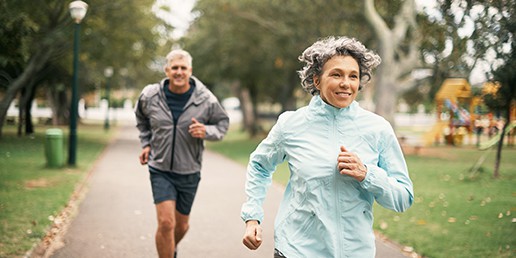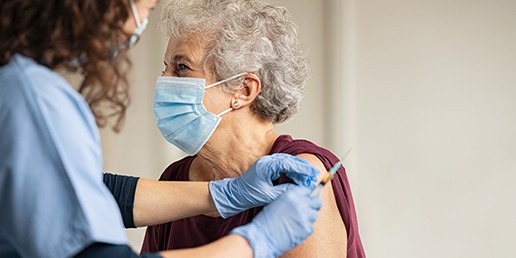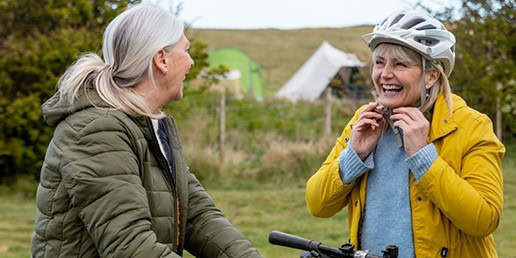Wellbeing and Disease Prevention
Serious symptoms and safety netting
WHAT IS SAFETY NETTING?
“Safety-netting advice is information shared with a patient or their carer designed to help them identify the need to seek further medical help if their condition fails to improve, changes, or if they have concerns about their health.”
Peter Edwards et al. Published in the British Journal of General Practice. November 2019.
The importance of SAFETY NETTING
The term Safety netting was introduced in 1987, by Roger Neighbour in his book “The inner consultation”. He formalised a key consultation task which is likely to have been completed by most GPs and other clinicians prior to his book but is now considered an essential step in a GP consultation.
Neighbour alludes to the fact that “general practice is the art of managing uncertainty”
Why is there uncertainty?
- Early, undifferentiated presentations. Some conditions can start gradually with just vague or mild symptoms, and nothing that sets it apart from other similar illnesses.
- Rare conditions have to be considered. So in health the relative probability of serious illness though very small can have a significant impact on health outcomes so though a condition is very unlikely it has to be considered in a practice consultation. This contrasts with many other areas of life where rare events do not have a serious impact so can just be ignored.
- The GP practice has limitations in terms of access to immediate investigations.
- Consultation times are only 10 minutes.
- Limitations of decision-making tools.
However, despite this clinicians get the decisions right the vast majority of the time. The difficulty is illustrated by the rare case where a child can be relatively well not requiring admission, to 6 hours later requiring an emergency admission. How is this child kept safe when the clinician cannot be with that child for 6 hours?
Neighbour asked 3 questions of clinicians (“The inner consultation”)
- If I am right, what do I expect to happen?
- How will I know if I am wrong?
- What would I do then?
Neighbour R. The inner consultation, Oxford, UK: Radcliffe Medical Press, 1987
Safety netting is an essential process in a consultation providing information for patients and then empowering the patient to use this information to act if there are future concerns, including contacting health services again.
Safety netting is what can keep the child in our example safer
Support for safety netting
NHS 111
As the NHS suggests
NHS 111 can help if you think you need medical help right now
Spotting serious symptoms and signs
However despite the available support of 111 it is still worthwhile everyone having some understanding how to spot some serious symptoms and signs including
It is also worth everyone having some understanding of the symptoms and signs which can indicate possible cancer
Serious symptoms and signs for specific conditions
Also as explained below, under the question “How can you safety net for specific conditions”, it can be helpful to know where to find information on “specific conditions” and what symptoms or signs mean you should attend your GP practice or if more serious go to A&E.
In many consultations your practice clinician (such as a doctor) will point you in the direction of some safety netting information.
Safety netting for SPECIFIC CONDITIONS
This is best illustrated by a specific example like back pain.
As the NHS suggests
“Back pain usually gets better on its own within a few weeks or months and you may not need to see a doctor or other healthcare professional.”
” Back pain” The NHS Website. Retrieved 11th January 2023.
However, embedded in most of the articles from the NHS, Patient info and NICE on various conditions there is safety netting information. This safety netting information includes when you should call 999 (or go to A&E) or instead ask for an urgent GP appointment or call 111. The term you may also see used for this information are “red flags”.
So, from the NHS in their article on sciatica they have included at the bottom of the page “Go to A&E or call 999 if you”
- “Have numbness around or under your genitals, or around your bottom (anus)
- Find it hard to start peeing, cannot pee or cannot control when you pee – and this is not normal for you
- Do not notice when you need to poo or cannot control when you poo – and this is not normal for you”
Sciatica Sciatica – NHS
So, in this example the condition Cauda Equina though not mentioned in the article is covered by the questions on the NHS website.
This is a rare condition 1 to 3 in 100,000 in the UK, but is a very serious condition, potentially requiring immediate surgery if confirmed after assessment in hospital, so it does require immediate action if there is concern a patient might have developed the relevant symptoms.
The probability of these serious conditions occurring after your initial practice consultation is very small, but such conditions need action.
Your GP practice clinician will point you in the direction of such information for many conditions, including on this website. It is recommended that you review and remember the “safety netting” advice given in each of the articles on the condition relevant to you. You hopefully will never need to act on this information but if you do need to act on this information doing so will significantly improve your health outcomes.
Sepsis and cancer cause significant concern to both patients and clinicians.
SPOTTING SEPSIS
Sepsis is not common, 40 to 100 per 100,000 population [Gotts, 2016] ( Prevalence | Background information | Sepsis | CKS | NICE), however it is very serious resulting in many hospital admissions. Many infections can develop into sepsis however the vast majority of infections are self-limiting and will not.
So, if you have visited your GP about an infection and the GP has for example decided you do not need any significant treatment or hospital admission, what symptoms would give you concern about sepsis in the period after the consultation? Beyond looking at the safety netting information on the condition you have, from say the NHS website, it is really worth having a better general understanding of sepsis and what to look out for if you have an infection and this is provided under
Your GP is likely to mention serious developments in your condition to watch out for but you having direct access to written information to refresh your memory will back this up.
If you or someone else has sepsis you should attend A&E immediately. Remember you can always call 111 if you are not sure and they can help decide whether you should attend A&E or if less serious just book an appointment with your GP. 111 can also organise an ambulance if that is what is needed.
SPOTTING CANCER
Cancer gets increasingly more common as we get older.
From Cancer Research UK
Cancer incidence by age Cancer incidence by age | Cancer Research UK
Having a general awareness of what key symptoms and signs should be assessed by your GP to exclude cancer is helpful. In addition, if you have certain symptoms such as bowel symptoms knowing what particular symptoms and signs are particularly associated with cancer is again helpful. Information on spotting cancer is provided under
In most cases you will never need to use this information but an awareness of this information can save lives.
SPOTTING A SICK CHILD
Beyond looking at the safety netting information on the condition your child may have been diagnosed with (e.g., bronchiolitis on the NHS website) it is also worth having a general understanding how to spot a sick child.
Like in adults, sepsis though uncommon can happen after any infection. In children it is also worth considering other features of a sick child such as shortness of breath and dehydration, particularly when your child cannot always communicate about their illness. These are covered under
If you are not sure whether to attend A&E or book an appointment with your GP, 111 can always advise.
When to attend A&E
Sometimes patients will come to their GP or go to a minor injuries’ unit when the safest and quickest action, and thus best action, would have been to go straight to A&E.
Again though you can call 111, if you are not sure whether you should go straight to A&E it is also helpful if everyone has some prior understanding on what symptoms and signs may indicate you need to attend A&E. Information on emergencies is included under




